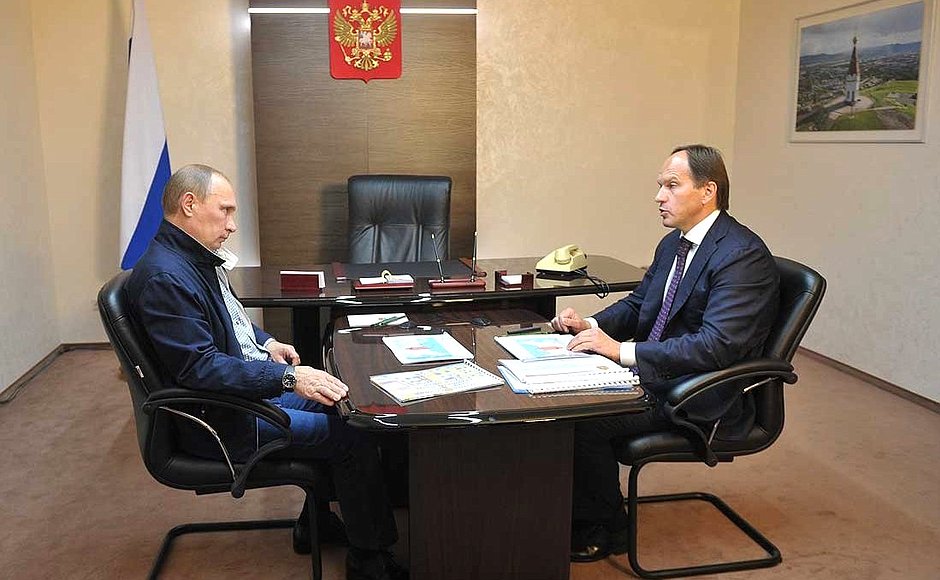
Three North Caucasian Republics Are De-Facto Bankrupt
Publication: Eurasia Daily Monitor Volume: 12 Issue: 176
By:

Russia’s Federal State Statistics Service (Rosstat) recently published data on the economic performance of the North Caucasian Federal District during the first seven months of 2015. According to the optimistic government statistics, the unemployment rate in the district fell by 1.5 percent, while industrial output and services grew by 15 percent. These figures appear to be fairly good, even when adjusted for inflation (Svpressa.ru, September 22). However, experts increasingly notice that the Russian government’s promises to boost the economy of the North Caucasus are hollow. In July, Prime Minister Dmitry Medvedev announced that the government would increase financing for the region by an additional $3 billion. Previously, Minister for the Development of the North Caucasus Lev Kuznetsov proclaimed that the slogan popular among the Russian nationalists, “Stop Feeding the Caucasus,” was outdated and the North Caucasus would actually feed the rest of the Russian Federation soon because it was actively developing its agricultural sector (Vz.ru, July 29).
However, some top Russian officials have made contrary statements. The Russian government has dropped its three-year budget-planning cycles, and even the budget for 2016 has not yet been agreed upon, as no one in the government wants to take responsibility for painful cuts (Gazeta.ru, September 25).
The figures suggest that Moscow’s ability to finance the North Caucasus is rapidly declining. For example, the much-advertised government-backed company for the development of tourism in the North Caucasus cut nearly all of its projects, one by one. Funding for developing tourism in Ingushetia alone was cut four fold. The Russian economy is in a state of flux, with declining prices of oil, which generates the bulk of Moscow’s revenues. Such financial instability makes budget planning difficult. Yet, the government’s program for the development of the North Caucasus boldly makes promises for the period stretching out to 2025. Some analysts point out that even the previous Russian government program, which was unveiled in 2012, was not realistic. In the current financial turmoil, the program has become even more generous and less sensible. Some analysts say the program for the development of the North Caucasus appears to be little more than a piece of propaganda. Moscow is bluffing—attempting to influence the North Caucasians by pacifying them with promises of the future prosperity (Kavkazskaya Politika, September 11).
The harsh reality, however, is that some North Caucasus republics are already de-facto bankrupt. Out of the seven republics of the North Caucasus, three—Ingushetia, Karachaevo-Cherkessia and North Ossetia—appear to have the worst credit balances. In these three regions, the republican debt exceeds total revenues. Ingushetia’s debt is estimated at $42 million, Karachaevo-Cherkessia’s at $80 million and North Ossetia’s debt is about $150 million. While those figures do not seem particularly high, these republics’ revenues are low, making them bankrupt regions, although officials refuse to admit this while Moscow continues to cover their current expenditures (Kavkazskaya Politika, September 24).
It is notable that the two quietest regions of the North Caucasus, Karachaevo-Cherkessia and North Ossetia, have ended up on the list of bankrupt regions: indeed, they receive relatively little financial assistance from Moscow compared to more volatile places. The fact that they are not volatile reduces the Russian government’s urgency to finance them, ultimately putting them deeper in debt.
One of the major issues of the North Caucasus is its inability to attract investors. Foreign investment in the North Caucasian republics has remained negligible: in 2014, in decreasing order, per capita foreign investment in Kabardino-Balkaria was estimated to be $33, $6 in North Ossetia, $4 in Dagestan, and less than $1 in Karachaevo-Cherkessia and Ingushetia. No foreign investment was recorded in Chechnya. Nearby Krasnodar region received $205 per capita foreign investment in 2014, a rather large figure in absolute terms given that its population exceeds five million. Russian investment is also higher in Krasnodar region, which is followed, in decreasing order of per capita investment, by Dagestan, Stavropol region, North Ossetia, Chechnya, Karachaevo-Cherkessia, Ingushetia and Kabardino-Balkaria. The difference between the most popular region with investors, Krasnodar region, and the least popular one, Kabardino-Balkaria, is about four fold. Experts cite the possibility of “riots” as the primary risk for investors in the North Caucasus. The term “riots” here is probably used as a euphemism for insurgent attacks. The other risk is the declining funding of the region by Moscow (Svpressa.ru, August 29).
The North Caucasus evidently has been a priority for the Russian government’s domestic policies. The perceived informal contract between Vladimir Putin’s regime and Russian society, which can be summed up as “steadily rising income in exchange for political complicity,” was most successfully and vividly implemented in the North Caucasus. That contract, however, seems to be on the verge of expiration, given that Moscow still promises large investments in the region while the actual funding decreases. This may mean that a new social contract is likely to emerge over the next several years or even months, since the previous contract no longer seems sustainable. The change may force Moscow to adjust its policies in the region to these new realities and increase instability in the republics.




